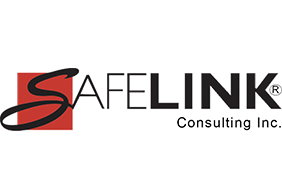After recently presenting a course on hazard identification and assessment, it struck me how many employers could benefit from revisiting this essential process. According to OSHA, one of the leading “root causes” of workplace injuries, illnesses, and incidents is the failure to recognize hazards—either those that are already present or those that could reasonably be anticipated. Because of this, OSHA considers hazard identification a critical element of every effective safety and health program. More importantly, it is not a one-time task but an ongoing process.
Steps for Identifying and Assessing Hazards
Employers can take several practical steps to strengthen their approach:
⇒ Involve employees. Workers often have firsthand knowledge of risks in their daily tasks.
⇒ Conduct inspections. Start with an initial workplace inspection if one hasn’t been done and schedule periodic follow-ups to identify new hazards.
⇒ Investigate incidents. Use workplace injuries, illnesses, near misses, or close calls to uncover hidden hazards and their root causes.
⇒ Review emergency and nonroutine tasks. Don’t overlook hazards that arise in emergencies or infrequently performed work.
⇒ Correct issues immediately. Adopt policies to address hazards such as poor housekeeping or tripping hazards as soon as they are identified.
Categories of Workplace Hazards
When assessing the workplace, consider the full range of hazards that may apply:
⇒ Health hazards: These can be more challenging to detect because they are often invisible and may not have immediate effects. They include:
o Chemical hazards (solvents, adhesives, paints, toxic dusts)
o Physical hazards (noise, radiation, extreme heat)
o Biological hazards (infectious diseases)
o Ergonomic risks (heavy lifting, repetitive motion, vibration)
⇒ Chemical hazards: Review product labels and Safety Data Sheets (SDS) to understand potential exposure, ventilation needs, and skin-contact risks.
⇒ Physical hazards: Be alert for harmful conditions such as excessive noise, radiation sources, or heat exposure.
⇒ Biological hazards: Assess whether workers may be exposed to infectious agents, molds, toxic plants, or animal materials that could trigger allergic reactions or occupational illnesses.
⇒ Ergonomic hazards: Watch for work activities that involve repetitive movements, awkward postures, or heavy lifting that could lead to musculoskeletal issues.
⇒ Emergency and nonroutine hazards: Include risks from fires, chemical spills, natural disasters, structural collapse, disease outbreaks, medical emergencies, or workplace violence. Nonroutine hazards can also stem from maintenance tasks performed only occasionally.
Assessing the Risk
Once hazards are identified, the next step is to evaluate the potential incidents that could occur if workers are exposed. Each hazard should be assessed for:
⇒ The severity of possible outcomes
⇒ The likelihood of occurrence
⇒ The number of workers who may be affected
This assessment allows employers to prioritize hazards, focusing first on those that pose the greatest risk. While all hazards must ultimately be addressed, prioritization helps ensure that the most serious threats are controlled quickly and effectively. The final step is to implement appropriate controls to eliminate or minimize risks.
Need support with hazard identification and assessment?
SafeLink Consulting can help you evaluate risks, prioritize solutions, and strengthen your workplace safety program. Contact us.
Learn about Implementing the Hierarchy of Controls for Workplace Hazards.





